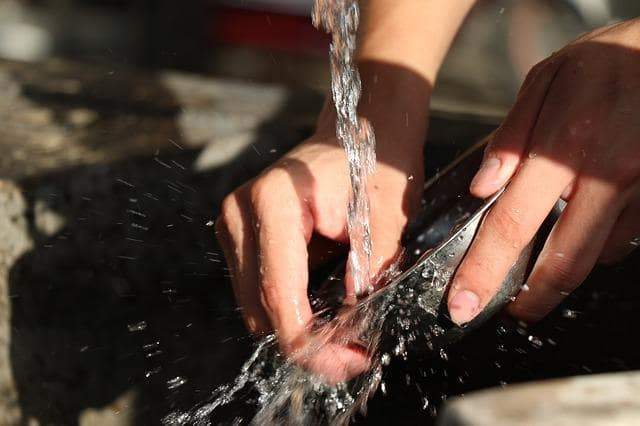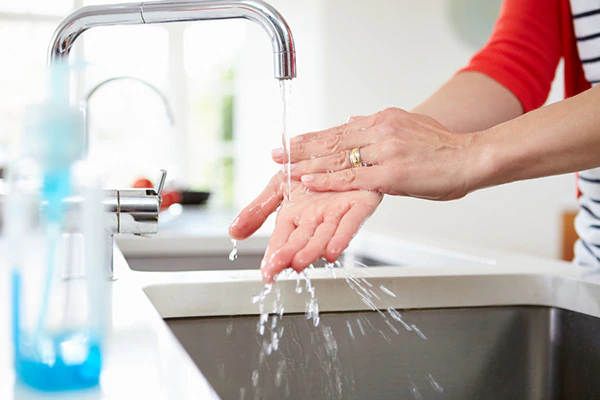If you’re washing a lots of dishes in your kitchen sink, you might not be the only one in your home wondering how to wash dishes in a single sink with less water.
It’s hardly a glamorous topic, but staying on top of dishes can make all the difference between an entire house reeking of food and not.
There are plenty of ways to do this but this could impress you. Most people think that doing the dishes means loading up a sink and doing each dish individually.
But that is not how to handle this. You need a procedure that will speed things up and save some water. Here’s how to make it work.
How to Wash Dishes in a Single Sink
Washing dishes by hand is easy. You don’t really have to learn how; it just comes naturally. But washing dishes in a single sink is very challenging, but how do you do it? Well, I’m going to show you how to wash dishes in a single sink.
In a single sink, there are two to three detergents and one sponge. You need a dish brush or scouring pad which cleans large items such as bowls and plates.
A small scrubber that is used for cleaning smaller things such as dishes, silverware, and other utensils. You also need two laundry detergents, dish soap and hot water.
Step 1: Wash Your Hands
Firstly, wash your hands thoroughly with soap and hot water. Basic hygiene is always good. You might want to make sure your hands are clean before you get started.
It’s not just about avoiding illness; you don’t want to get the faucet or the sink dirty. It makes no sense to wash dishes that have already been used to pick up food scraps.
Step 2: Clean the Sink

When cleaning the surface of the sink, make sure to clean every corner of it, as well as underneath any exposed pipes or other parts that may not be easily visible to you while you are washing dishes by hand.
Also make sure that there are no food particles or other residue on or around your garbage disposal or water filter. As a result of this process, some soapy water will find its way to the floor.
Respond to this by not placing your feet under the flow of said water, and wearing shoes that can get wet.
Step 3: Assemble All the Dirty Utensils

Assembling all the dirty dishes into a pile in the sink makes it easier to wash them. It’s tempting to put off doing it, but once you’ve washed a few dishes, the rest will be much easier.
Step 4: Prepare a Soapy Water
Prepare soapy water in a separate pot for washing each dish. You can use hot or cold water. The temperature of your soapy water is up to you.
Prepare soapy water by adding soap to the dishwater. Soap is important for removing grease and other food remnants from dishes.
The best soap for dishes is a dishwashing liquid, which contains surfactants, chemicals that readily mix with both oil and water. If you don’t have dishwashing liquid, use whatever soap you have at hand.
Step 5: Wash the Dishes in Order

Wash the rest of the knives, followed by forks, then spoons. Cups are among the last things to be washed, since they can sit on the counter without being cleaned for a while.
When stacking the dishes after washing them, try putting similar items next to each other, cups with cups and plates with plates. This will save space on your drying rack.
Step 6: Rinse the Dishes with Running water

And it fills the spaces between the dishes with water, which means that when you dry them, they’re less likely to hold on to bacteria.
Step 7: Sanitize
If you have a washing machine, you can use it to wash your dishes. Load the dishwasher as if you were going to run a full load of dishes. Add about four cups of vinegar to the bottom of the dishwasher.
Run the empty dishwasher on its hottest cycle using detergent, without any dishes inside. This will sanitize the dishwasher and leave a small amount of water in the bottom of the dishwasher tub.
Step 8: Wipe your dishes
After you have rinsed all of your dishes and utensils, drain the dirty water and add some fresh water to the sink. Use a dishcloth or sponge to wipe down your countertops and table.
Then dry all of your cleaned dishes and utensils with a towel and put everything away in its proper place.
Watch to learn more
Difference Between Single Sink and Double Sink
Single sink plumbing with a dishwasher is less expensive than double sink plumbing with a dishwasher. The cost of the two sinks, faucets, and pipes is more expensive than the one sink, faucet, and pipes needed for single sink plumbing.
However, you will have to buy a garbage disposal unit instead of just a drain stopper for single sink plumbing.
For this reason, a single sink has a larger surface area than a double sink. This makes it easier to wash large containers and pots and pans in a single sink.
However, on the flip side, a double sink can be more convenient as you don’t have to move your dishes from one side to another if you want to use both sides of the sink at once.
A double sink is a type of sink, which has two separate bowls to hold dirty dishes. A single sink is a sink, which has one bowl to hold dirty dishes.
Sinks are usually installed in kitchens. They are used to wash dishes or other things that are dirty. Sinks can be made of many different materials. Usually, they are made of stainless steel or porcelain.
Conclusion
We believe that the key to washing dishes in a single sink is to divide the tasks and to be strategic about it. We categorize each plate or bowl as one of the following: either item that need to be hand washed, rinsed, and dried, or those items that can go into the dishwasher.
The best system will depend on the layout of your kitchen and sink. But if you want a general guideline, cleaning your dishes in one sink is possible so long as you keep clean dishware and supplies stored nearby. Grease can get into the drain pipes and cause a clog or even worse, back up into your kitchen floor.
So, every time you wash dishes in a single sink, be sure to clean it immediately afterwards. To maximize every inch of your space, we suggest you try the above steps.
Few Hand Picked articles for you
Lights for your Home
Furniture Restoration
Kitchen Layouts
Kitchen ideas
Wall Art Ideas
Carpet Cleaning Tips
Home redecoration
Areas to use ceramic tiles
Living room interior design ideas
Designer Bathroom Accessories





